Come visit the Palau de la Música in Barcelona and discover the Spanish art scene as you will not see it anywhere else!
A true architectural gem of the Catalan capital, the Palau de la Música of Barcelona is a singular and representative monument of the modernist movement that characterizes the city so well. Unique in the world, this huge concert hall is the only one to be registered as a UNESCO World Heritage Site since 1997.
Visit the Palau de la Música of Barcelona and embark for a memorable journey in the heart of the Spanish musical universe in all that it has more magical!
History of the Palau de la Música in Barcelona
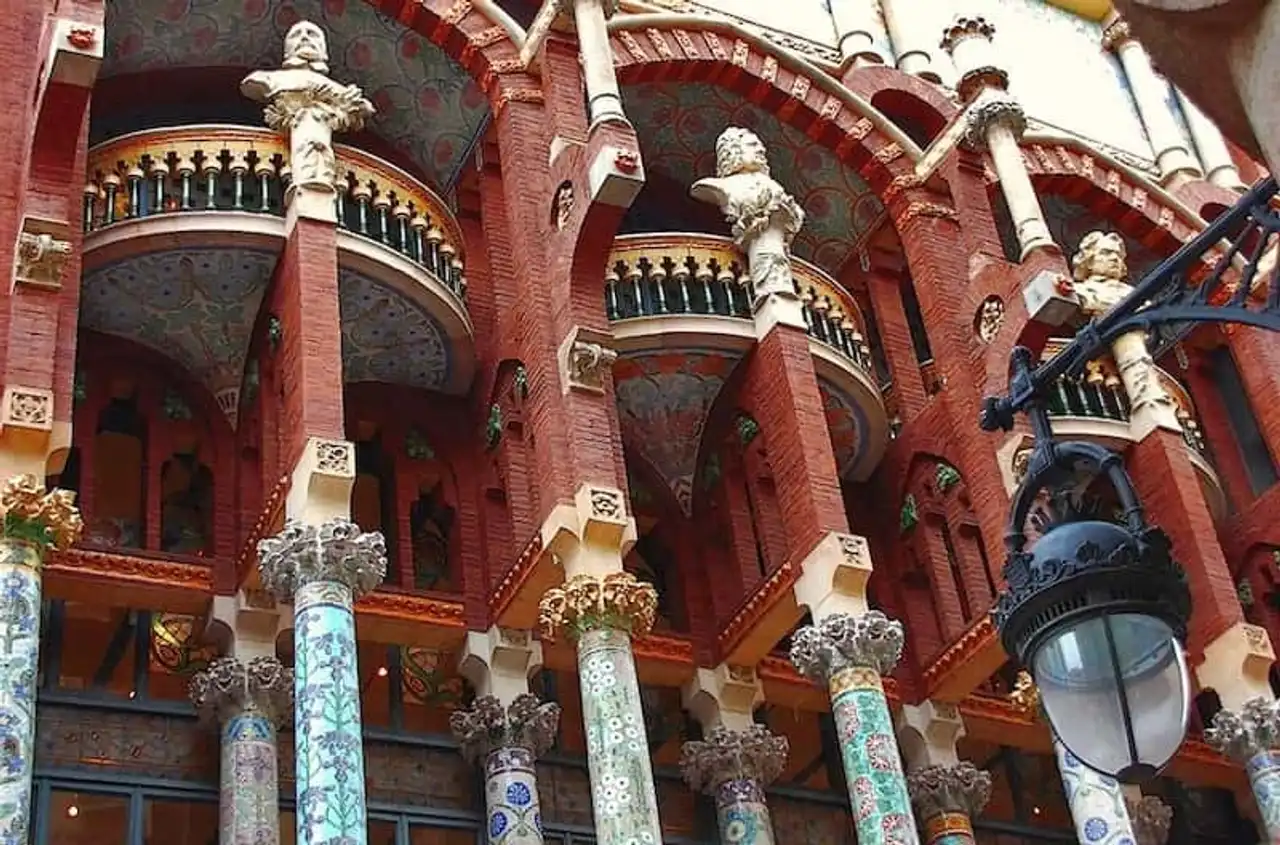
Photo credit: Flickr – Peter
It’s in 1904 that the idea of the Palau de la Música of Barcelona is launched by the association Orféo Català , who wishes to erect a building to install its headquarters there. The project is then naturally entrusted to Lluís Domènech i Montaner , Catalan architect pioneer of the modernist current Antonio Gaudí was one of the disciples.
Financed by local patrons, large industrialists, music enthusiasts and popular gifts, the building sees its first stone laid in April 1905 . During the 3 years that the work was hardened, Luis Domènech i Montaner was able to surround himself with the best sculptors, stained glassmakers, painters, decorators and ceramists to create a unique and innovative monument, mixing with perfection metal structures, floral motifs, harmonious curves, stained glass windows and colourful mosaics, facade in curtain walls and steel carpenters. It is officially inaugurated February 1908 .
If today the Palau de la Música of Barcelona is only dedicated to musical events, it was not always the case. Indeed, one of the desires of Orféo Català and the participants in the project was to make the monument a political symbol with a pronounced nationalist character. But because of the history and sometimes tumultuous past of the country, several performances often unrelated to the musical milieu were organized in the palace over the years: general assemblies of political groups and parties, performances of Russian soldiers, tribute ceremonies, choir of Hitlerian youth, plays, etc.
It was only in the 1960s that the Palau de la Música of Barcelona reconnected with a more free programming focused on music. ♪ 1971 , he gets the title Spanish National Monument and 2002 , this is gold medal of fine arts merit which is awarded to him.
What to see and do at the Palau de la Música in Barcelona
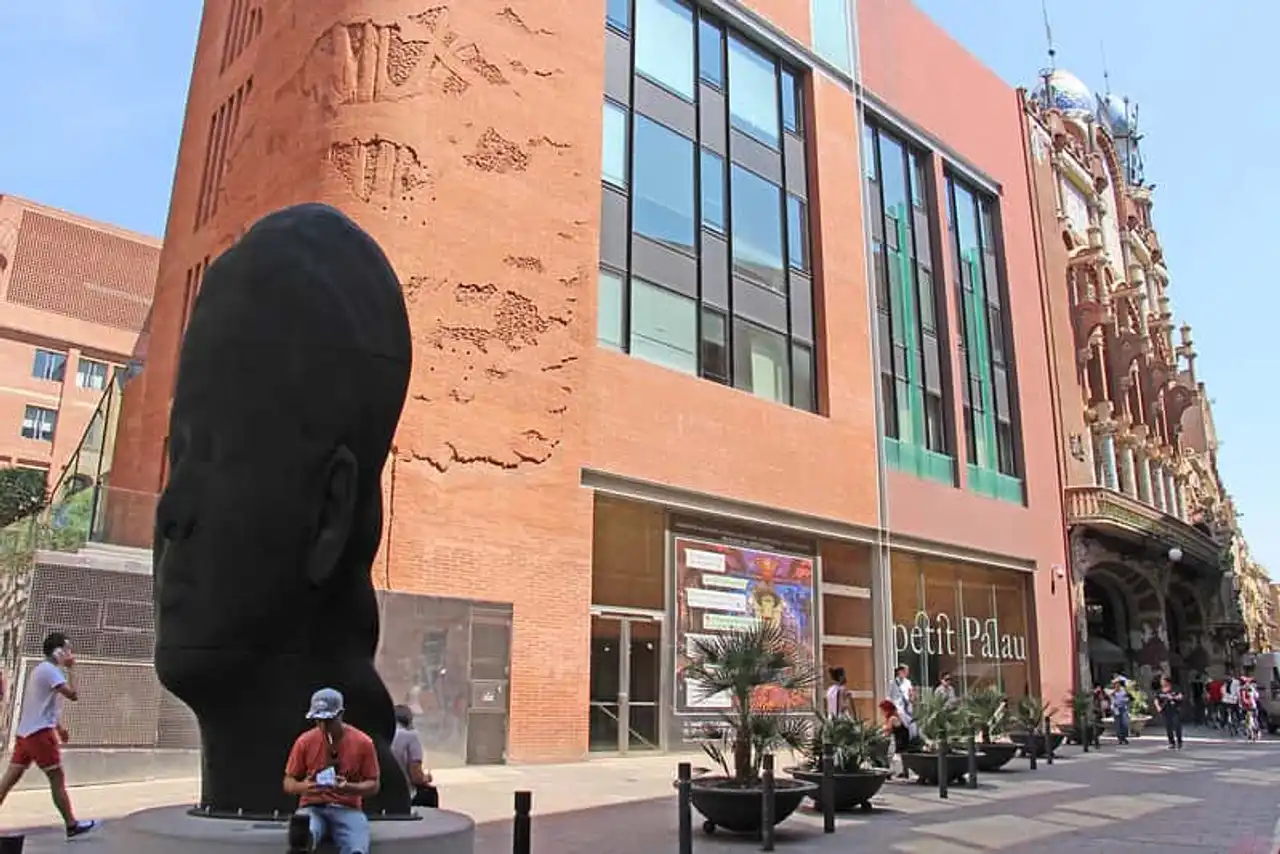
Photo credit: Flickr – Fred Romero
Your discovery of the artistic and musical universe of the Palau de la Música of Barcelona will begin even before you have crossed the gates. You can admire the Carmela statue of the Barcelon artist Jaume Plensa before entering the palace.
Your visit will start in Rehearsal room of the choir of the Orféo Català with a video retracing the history of the palace and life in the society of the 1900s. You will then take the magnificent stairs decorated with flowers and Catalan flags to access the hall Lluís Millet , the founder of Orféo Català. Finally, you will enter the immense concert hall of the Palau de la Música of Barcelona, bathed in natural light thanks to its large central dome. You can walk freely on the stage and walk through the room to admire the exceptional decorations, the colorful stained glass, the balconies with floral fries and the columns decorated with mosaics that make the beauty and fame of the palace.
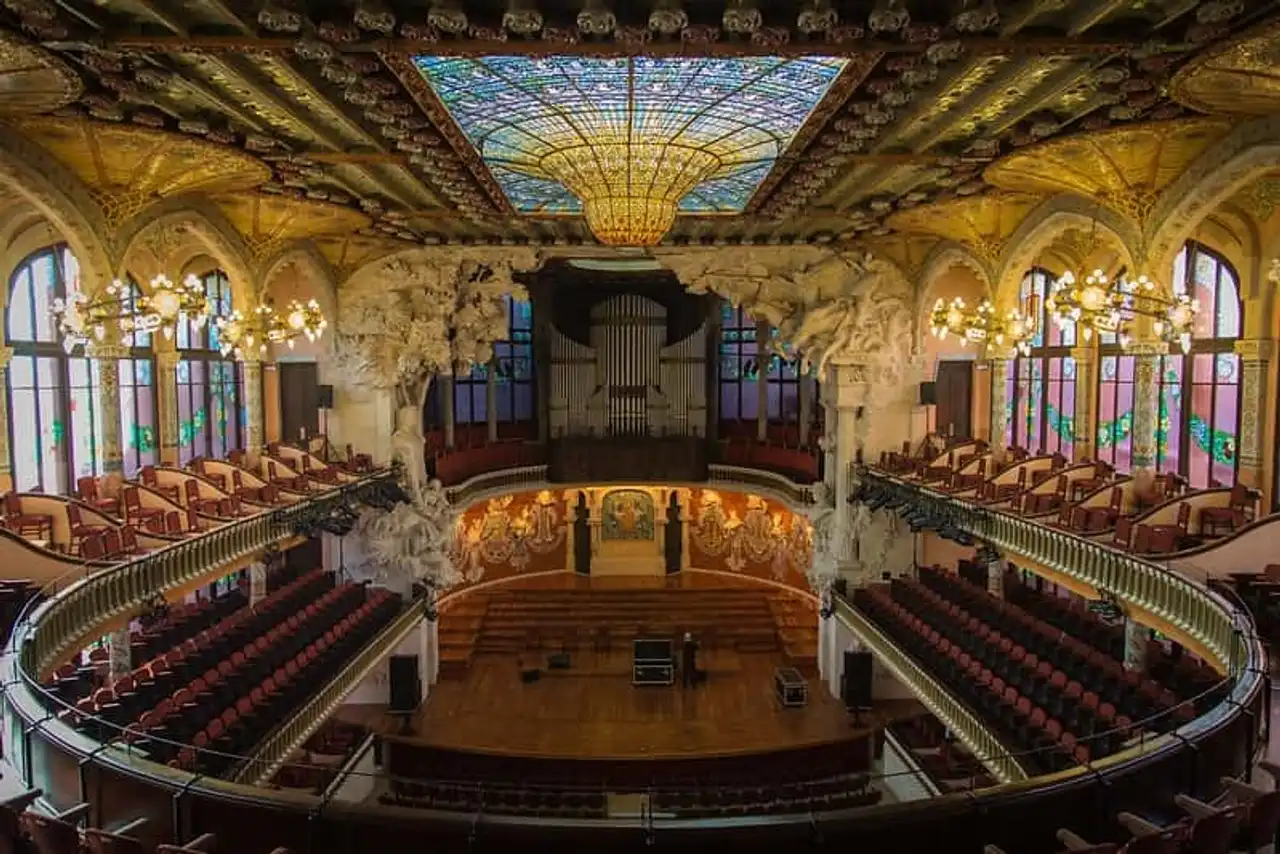
Photo credit: Flickr – Paulo Valdivieso
Other areas of the Palau de la Música in Barcelona are accessible to the general public. So you can visit Documentation Centre Orféo Català, specialized in the music and history of the association and the palace. You can also make a lot of memories in the shop Palau Shop located in the Foyer Art Nouveau: books on music and architecture, jewelry, paperwork, decorative objects, audio recordings of the choir, etc.
For a gourmet break, take a tour Cafe Foyer to taste local culinary specialties after your visit to the palace or during the tour of a show. The Palau de la Música de Barcelona is renowned for its eclectic quality programming throughout the year. He is one of the most luxurious and prestigious musical scenes in the world. Recital, concert of classical music, opera, flamenco show, piano competition, jazz orchestra: all genres are represented and, unlike what one might think, access is not only reserved for the bourgeois class.
How to get to the Palau de la Música de Barcelona
Just like the famous Pablo Picasso Museum , the green park of Ciutadella and the medieval Passeig del Born, the Palau de la Música of Barcelona is located in the district of La Ribera, one of the oldest in the city and was once the economic center of the Catalan capital.
The address to go to the palace is: Carrer Palau de la Música, 4-6 – 08003 Barcelona, Spain .
Depending on where you are located, you can go to Palau de la Música:
Public bus
- Line V15: stop « Via Laietana/Comtal »
- Line V17 : stop « Via Laietana/Comtal »
- Line N8 : stop « Via Laietana/Comtal »
- Line N28: stop « Via Laietana/Comtal »
- Line 47: stop « Via Laietana/Comtal »
Tourist bus hop on hop off
- Blue line: stop « Casa Batllo/Antoni Tàpies »
- Red line: stop « Casa Batllo/Antoni Tàpies »
By official tourist bus (City Tours)
- Itinerary East (vert): Stop 2, "Catedral/Gotic"
By metro
- Line 1 (red): "Urquinaona station"
- Line 4 (yellow): « Urquinaona station »
By train (RENFE or FCG)
Get off at Plaça Catalunya station
By car
Garage in one of the three car parks of the SABA network located near the palace:
- Plaça Urquinaona
- Plaça de Catalunya
- Catedral
Prices of Palau de la Música de Barcelona
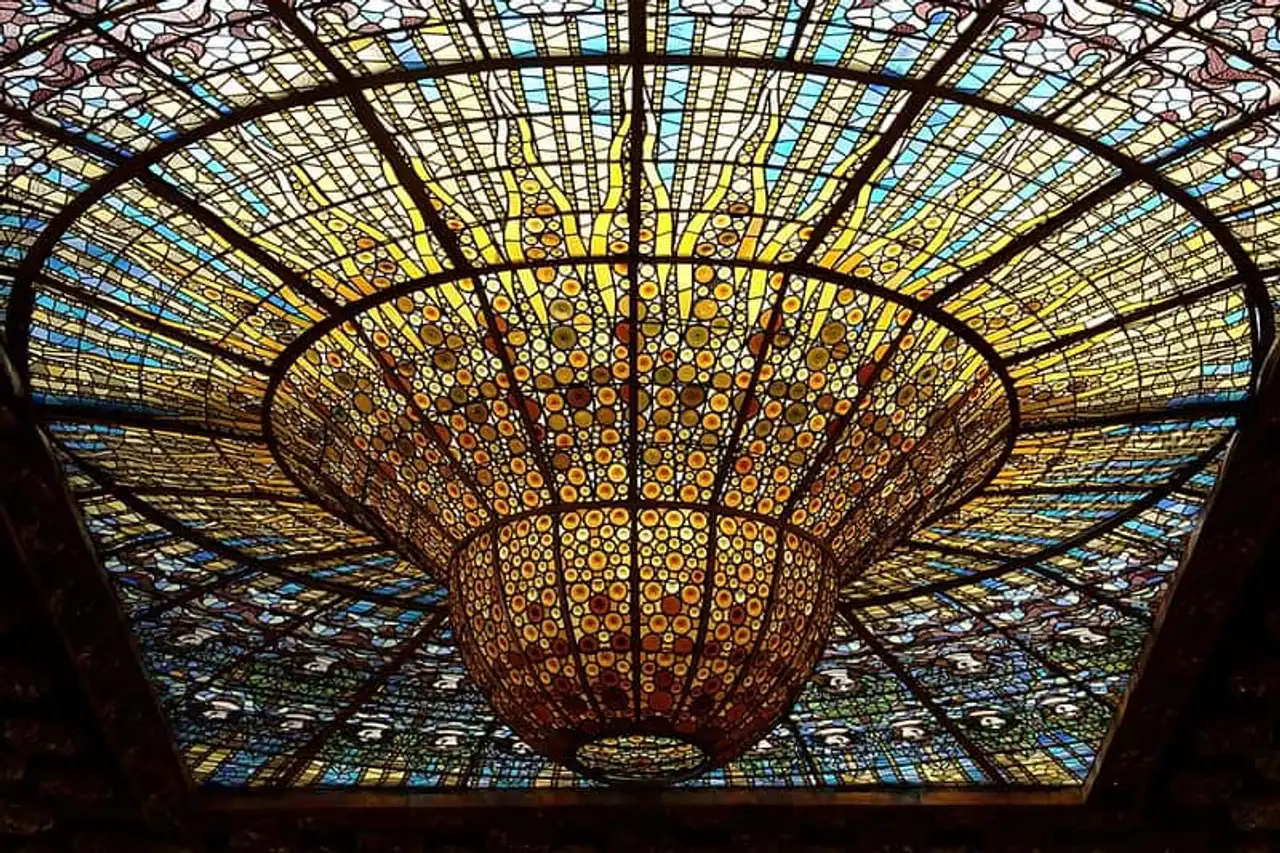
Photo credit: Flickr – Augusto Gomes
HORARI
The visits of the Palau de la Música de Barcelona are every 30 minutes at the following times:
- Every day of the week from 10:00 to 15:30
- Easter and July period from 10:00 to 6:00
- August : from 09:00 to 18:00
RATES
There are 2 different ways to discover the Palau de la Música of Barcelona: the Conventional visits and exclusive towers . For these, rates are only available on direct request from the palace.
You can choose from the formulas below which best corresponds to your wishes, your dates of stay and your budget:
Classic rates
- Guided standard tour : 20€
- Independent visit (without guide): 15€ (only from July to September)
- Guided standard tour with open date : 20€ (billet is valid for 6 months, for any date)
- Guided standard tour + mini-concert of the choir : 25€ (only in July)
- Guided standard tour + piano recital : 30€ (only in August)
- Organ recital : 22€ (only in August, in addition to the visit)
- Piano recital : 25€ (only in September, in addition to the visit)
Reduced or preferential rates for the guided standard tour
- Booking more than 21 days in advance : 16€
- Persons aged 65 or older : 16€
- Catalan residents : 10€
- Students and unemployed persons : 11€
- 20% reduction: for groups of 25 or more, passengers of the airport shuttle Aerobus and the tourist bus hop on hop off, holders of the Barcelona Card, people participating in an official guided tour of the city (including Ruta del Modernismo)
- Free Children aged 10 or under (if accompanied by a parent)
You can book your tickets for tours (guids or not) in different places
- Online on the official website of the Palau de la Música de Barcelona
- At the counter located at the entrance of the palace
- By phone 0034 902 475 485
- By e-mail to [email protected]
- At the window at the Virreina Palace in Las Ramblas (La Rambla, 99)
BON TO LEARN
- The restaurant of the Palau de la Música de Barcelona — Cafe Foyer — is open daily from 9:00 a.m. to midnight.
- If you attend a performance (concert, opera, dance show, etc.), know that audio or video recordings are strictly forbidden.
- The visit is provided by guides speaking French, English, Italian, Spanish and Catalan and lasts on average between fifty minutes and an hour.
- It is preferable to book your ticket in advance, especially during periods of severe affluence (school holidays, extended weekends and summer season).
- Food and beverages are not allowed during visits (guids or not).
- The Palau de la Música of Barcelona does not have a locker room or luggage storage.
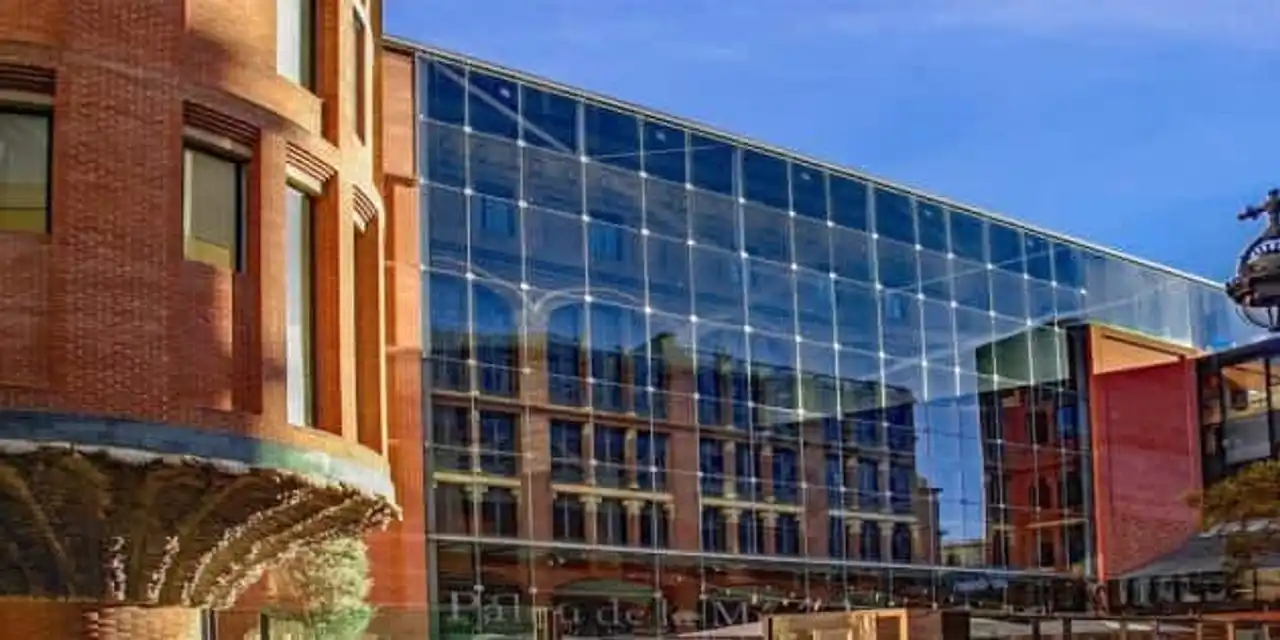





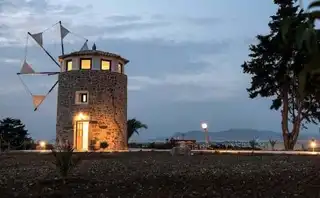
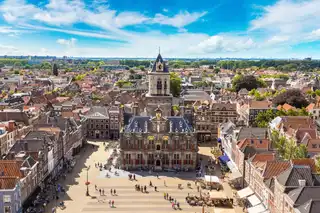
Loading comments ...